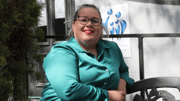Qantas rolls out 'Australian-first' group boarding after successful trials
By
Danielle F.
- Replies 12
When travelling, we look forward to the destinations and the memories we can make.
However, the process—especially boarding—can sometimes be less enjoyable.
Long queues, the rush to find overhead bin space, and the general stress of boarding can take away from the joy of travel.
In recent developments, Australia's flagship carrier is set to change that narrative with a new system.
Qantas introduced a new boarding process promising to streamline the boarding experience and keep flights on time.
This 'Australian-first' group boarding shook up traditional boarding methods, and it's something travellers should look forward to.
While group boarding has been a global concept, the new process is a fresh approach for the Australian carrier.
The system will categorise passengers into six groups based on factors like travel class, frequent flyer status, and seat location.
Boarding passengers in a specific order could reduce wait times and allow everyone to settle faster.
'We know how important on-time departure is to our customers, so this process is also about doing everything possible to ensure we depart on time,' he stated.
The new boarding process has been implemented in Brisbane.
Other major cities like Perth, Melbourne, and Sydney should follow suit throughout the month.
While the concept of group boarding is well-established overseas, the evidence on whether it speeds up the boarding process is mixed.
Some studies suggest boarding blocks from front to back could be slower than a free-for-all approach.
However, Qantas remained confident that their system would improve the passengers' experience.
Prior to Qantas' new policy, other airlines also experimented with various boarding methods for efficiency.
Physicist and professor Jason Steffen proposed a method to speed up boarding: passengers would board in alternate rows from window seats to aisle seats.
While theoretically faster, the complexity of ensuring every passenger is ready at the exact right time makes it impractical.
United Airlines adopted a less complex method known as WilMA, which boards passengers from window seats first, followed by middle and then aisle seats.
American carrier Southwest Airlines took a different approach by allowing passengers to choose their seats, which reportedly resulted in faster boarding times.
Qantas did not disclose the exact makeup of its groups.
However, priority will be given to first and business-class passengers and passengers with higher Frequent Flyer status.
We understand the value of comfort and efficiency, and Qantas's new boarding method could switch up our travel experience.

What are your thoughts on this new boarding process? Are you looking forward to trying it out on your next domestic trip with Qantas? Share expectations with us in the comments section below.
However, the process—especially boarding—can sometimes be less enjoyable.
Long queues, the rush to find overhead bin space, and the general stress of boarding can take away from the joy of travel.
In recent developments, Australia's flagship carrier is set to change that narrative with a new system.
Qantas introduced a new boarding process promising to streamline the boarding experience and keep flights on time.
This 'Australian-first' group boarding shook up traditional boarding methods, and it's something travellers should look forward to.
While group boarding has been a global concept, the new process is a fresh approach for the Australian carrier.
The system will categorise passengers into six groups based on factors like travel class, frequent flyer status, and seat location.
Boarding passengers in a specific order could reduce wait times and allow everyone to settle faster.
Qantas Domestic CEO Markus Svensson heralded this as the 'most comprehensive change we're doing to the boarding process for over a decade'.'We know how important on-time departure is to our customers, so this process is also about doing everything possible to ensure we depart on time,' he stated.
The new boarding process has been implemented in Brisbane.
Other major cities like Perth, Melbourne, and Sydney should follow suit throughout the month.
While the concept of group boarding is well-established overseas, the evidence on whether it speeds up the boarding process is mixed.
Some studies suggest boarding blocks from front to back could be slower than a free-for-all approach.
However, Qantas remained confident that their system would improve the passengers' experience.
Physicist and professor Jason Steffen proposed a method to speed up boarding: passengers would board in alternate rows from window seats to aisle seats.
While theoretically faster, the complexity of ensuring every passenger is ready at the exact right time makes it impractical.
United Airlines adopted a less complex method known as WilMA, which boards passengers from window seats first, followed by middle and then aisle seats.
American carrier Southwest Airlines took a different approach by allowing passengers to choose their seats, which reportedly resulted in faster boarding times.
Qantas did not disclose the exact makeup of its groups.
However, priority will be given to first and business-class passengers and passengers with higher Frequent Flyer status.
We understand the value of comfort and efficiency, and Qantas's new boarding method could switch up our travel experience.
Key Takeaways
- Qantas recently introduced a group boarding process for domestic flights, aiming to keep flights on time.
- This 'Australian-first' boarding method will group passengers into six based on class, frequent flyer status, and seat location.
- There is mixed evidence on the effectiveness of group boarding, as some studies showed faster methods than others.
- The rollout of Qantas' new boarding approach started in Brisbane and will be implemented in Perth, Melbourne, and Sydney throughout the month.








